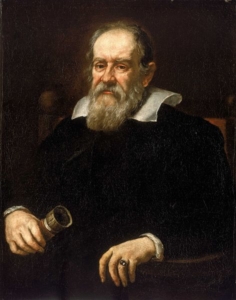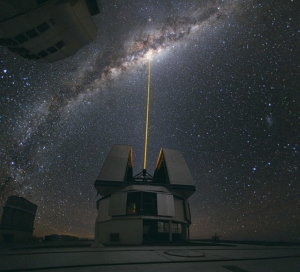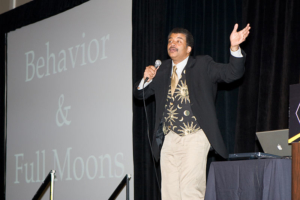How astronomy began
When a person thinks of astronomy, they may have the image of someone with a telescope gazing up at the night sky. While it’s a bit of a cliche, it is what started the whole astronomy field in the first place. However, it wasn’t until the 17th century when Galileo Galilee first decided to take a field telescope used as a tool of war and simply point it up at the night sky.

With more of an interest in celestial objects than enemies at a distance, it was Galileo’s decision that led to all of modern day astronomy as we know it. Although he did not invent the telescope, he was indeed the first documented individual to use it to observe night sky objects.
It wasn’t too long after this, another brilliant individual further advanced the telescope. Sir Issac Newton invented the first Newtonian telescope which used mirrors to reflect light instead of traditional refraction lens types. He became obsessed with developing better optics while accidentally making additional discoveries along the way. Some of Newton’s discoveries gave us a better understanding of light and how it operates.
Modern astronomy
Modern astronomy is a natural science that incorporates physics, chemistry and perhaps most importantly, mathematics. Astronomy has several branches and includes Observational Astronomy, Theoretical Astronomy and Cosmology to name a few.
Observational astronomy relies heavily on optic information. Whereas theological astronomy relies more on critical thinking and uses the scientific method. It often includes a strong hypotheses that needs further testing before the idea can be considered a theory.
Cosmology is focuses on the universe as a whole as opposed to any single specific object in space. All fields of astronomy spawn from the study of everything outside of Earth’s atmosphere.
Professional astronomers
In order for someone to be considered for a paid career position, a PhD is often the minimum requirement. They may be hired or contracted to handle specific high-level tasks and projects beyond basic understanding levels. Any level of education below this level is considered a student or apprentice in most hiring workplaces seeking professional astronomers.

Jobs for professionals can include college level professors, NASA specific missions, and Observatory management to name few.
Funding for Astronomers
As you perhaps already guessed, space itself does not actually pay people to unlock her mysteries. The funding often comes from schools or government. On occasion private corporations like SpaceX and Blue Origin.
Those seeking a career in astronomy should have solid math, physics, chemistry and computer science education and skills. This of course is in addition to the core interest in astronomy itself which only a few schools offer complete programs.
Amateur astronomers
Because of high interest and low job availability, amateur astronomers perform their labor of love for the same reasons many professional astronomers do; because they love space science! Almost nowhere else will you see large groups of volunteers helping professionals side by side and answering questions together. Without the help of amateur astronomers, many discoveries would still be unknown.

The easiest way to contribute as an amateur astronomer to the scientific community is to learn as much as you can, find a specific interest and share your discoveries with the world.
Many comets and asteroids have been discovered by amateurs. In addition, amateur astronomers have captured major historical events. Two days before fall in 2016, amateur astronomer Victor Buso, from Rosario, Argentina, was testing a new camera on his telescope. It was this moment when 8.5 million year old light from a supernova arrived. This was the first time anyone had ever captured the initial moments of a supernova visually. Normally, in order to see supernova explosions, x-ray and gamma ray telescopes are required. The human eye cannot normally see such events. A very skilled amateur astronomer just so happened to capture this unpredictable 20 second event.
Astrophysics
Astrophysics is a branch of astronomy that combines physics and chemistry to study objects in space. Their focus is more than just on the motion and behavior of objects. Modern astronomical research requires solid understandings to prove theoretical and observational astronomy. Some of the main topics tackled by an Astrophysicist include; solar objects, galaxies, cosmic microwave background radiation, black matter and dark energy.

Perhaps everyone already knows of the famous astrophysicist Neil Degrasse Tyson whom currently holds the torch Carl Sagan once possessed. Each generation has a beloved space science educator and Dr. Tyson has the current position of our Pop Culture Professor. In addition to being the face of science, Dr. Tyson actually has many peer reviewed contributions to the field of astronomy.
Some of you may know him as the scientist who demoted Pluto to a dwarf planet. Others will know him from the Advisory Council to NASA and some from his role at the Hayden Planetarium. Author, host of StarTalk, acting roles in mainstream and many other appearances and contributions. Neil Degrasse Tyson has single-handedly reshaped how astronomy is viewed in the 21st century. Taking it from a once boring classroom topic to a serious discussion we should all be having with each other.
The future of astronomy
Beyond the telescope, we have technologies like LIGO that detect gravitational waves from space. Then there is the Large Hadron Collider (LHC), that smashes particles together. Furthermore, deep inside old abandoned mines we’ve created a lake of antifreeze to detect mysterious neutrinos. It’s fascinating yet still very unknown where all this data will eventually lead us.
There are yet so many unanswered questions and theoretical astronomers will likely continue to lead the way. From there, observational astronomers of all education and interest levels will take the difficult postulated questions and try to answer them.
Astrophysicists will delve deeper into the cosmos and continue to find additional clues to the theory of the big bang and what’s beyond the observable universe. For now, imagination and inspiration will fill our hearts with the fascination of the great unknown. Teamwork will bring the brightest minds together for the greater good of all humanity.
The human mind seeks to understand life’s greatest mysteries. This is nature attempting to fathom itself from one form to another; people pondering and the universe’s conundrums. So as we journey forward, we will surely have a better sense of our place in the universe while unlocking one mystery at a time.


